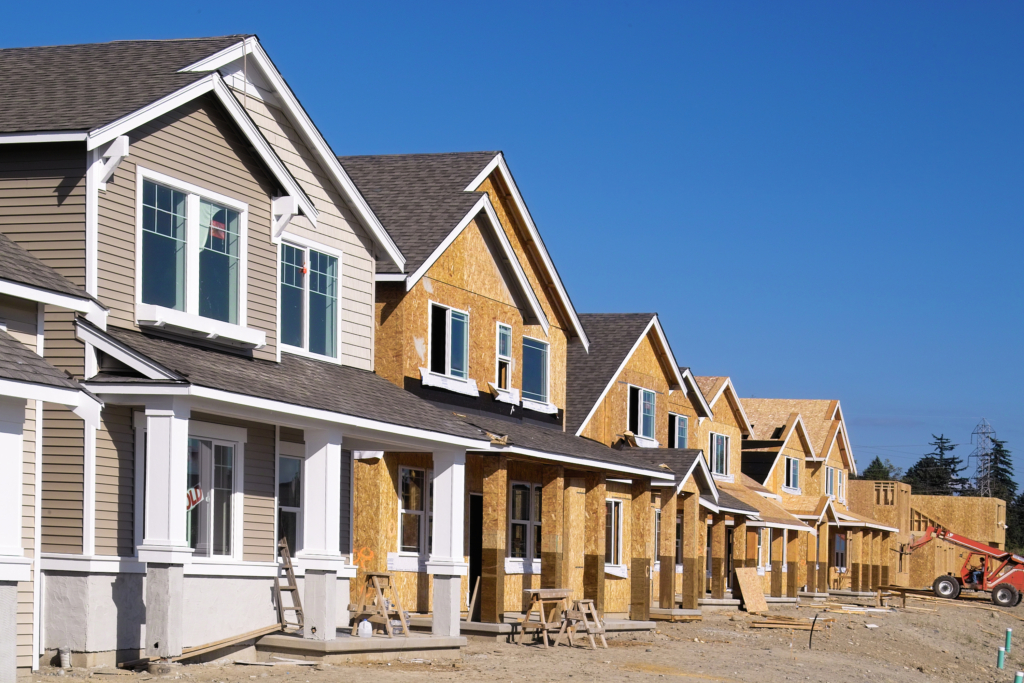Homebuilding Momentum Falters in 2025 Where Inventory Climbs


Single-family permitting fell 6.3% in the first half of 2025, signaling a slowdown after a year of rebound. Markets like Jacksonville, San Antonio, and Boston led the retreat in permits, with each seeing double-digit percentage declines compared to the same period in 2024.
Affordability remains a major challenge, especially for first-time buyers, despite slightly lower mortgage rates. Buyers are gaining leverage but sales volumes are sluggish and inventories are rising across much of the country. Existing home inventory is now at a six-year high and exceeds pre-pandemic levels in many markets, forcing builders to increase incentives and reduce prices to maintain sales.
While permitting activity in 2025 remains 16% above pre-pandemic levels, it’s a step down from 2024’s momentum, reflecting shifting builder sentiment. Notably, more than half of the 50 largest metros are still permitting more homes than their pre-2020 average, but overall momentum is clearly weakening.
Markets with the largest declines in permitting activity
Among the largest 50 metros, Jacksonville, San Antonio, Boston, Denver and St. Louis have seen the largest pullback in total single-family permits issued in the first six months of the year, compared to last year.
| Total Permits | January 2024 – June 2024 | January 2025 – June 2025 |
| Jacksonville | 7,325 | 4,949 |
| San Antonio | 6,047 | 5,004 |
| Boston | 1,917 | 1,606 |
| Denver | 4,943 | 4,183 |
| St. Louis | 2,527 | 2,145 |
Some markets are still gaining
Among the largest 50 metros, Kansas City, Orlando, Cincinnati, Pittsburgh and Oklahoma City have seen the largest increase in total single-family permits issued in the first six months of the year, compared to last year.
| Total Permits | January 2024 – June 2024 | January 2025 – June 2025 |
| Kansas City | 2,195 | 2,501 |
| Orlando | 7,600 | 8,599 |
| Cincinnati | 2,005 | 2,249 |
| Pittsburgh | 1,794 | 1,967 |
| Oklahoma City | 3,041 | 3,310 |
Homebuilding rebounded in 2024 after two years in decline, driven by builder optimism, easing mortgage rates, low resale inventory and a 4.7 million-unit housing deficit to address. In response to the ongoing housing affordability crisis, builders doubled down on their pivot toward more affordable and more dense housing types. Single-family starts rose 6.6%, while condo and townhome construction surged 10.7%, more than twice the growth rate of detached homes. This expands on a trend that began in 2022 and continued in 2023.
As the cost of space increased, lot size and home size shrank
The average size of new single-family homes shrank to 2,100 square feet, down 100 square feet from the year prior and 200 below the pre-pandemic average. Lot sizes declined even faster to 6,300 square feet, now 1,100 square feet smaller than in 2019.
Builder confidence was buoyed by limited resale inventory, mortgage rates falling from their 2023 highs, and an incentives strategy that kept new home sales rising.
Persistent underbuilding in expensive markets continues to erode affordability. Metro areas with high price-to-income ratios, such as San Jose, Los Angeles, and San Francisco, consistently permit fewer homes per capita than other regions.
| MSA | ZHVI (as of June 2025) | Median Income (as of June 2025) | ZHVI-Income Ratio (as of June 2025) |
| San Jose | $1,732,207 | $163,949 | 10.6 |
| Los Angeles | $1,019,539 | $98,875 | 10.3 |
| San Francisco | $1,229,790 | $136,235 | 9.0 |
| San Diego | $995,641 | $111,919 | 8.9 |
| New York | $734,763 | $102,739 | 7.2 |
In the past 12 months, metros with price-to-income ratios one standard deviation above the national average issued less than half as many permits per capita on average as their peers, locking in long-term affordability challenges.
Builders can only respond to demand where regulations allow. While geographic constraints can play an important role, zoning and permitting policies restrict housing growth in many cities. Tackling the housing deficit will require structural reforms:
Zillow survey data suggests most Americans support increased density in their own neighborhoods to ease affordability. The “Build the Middle” playbook provides guidance for removing regulatory barriers to more inclusive growth.